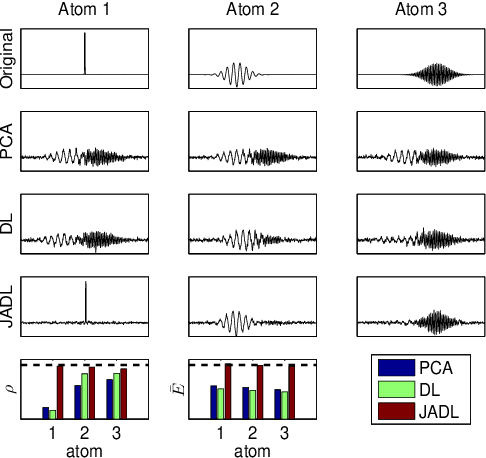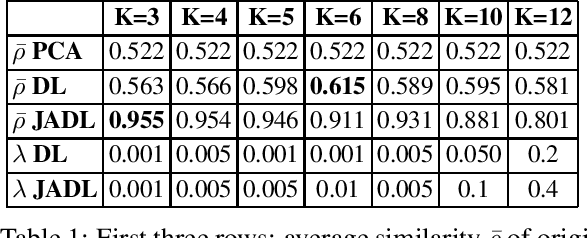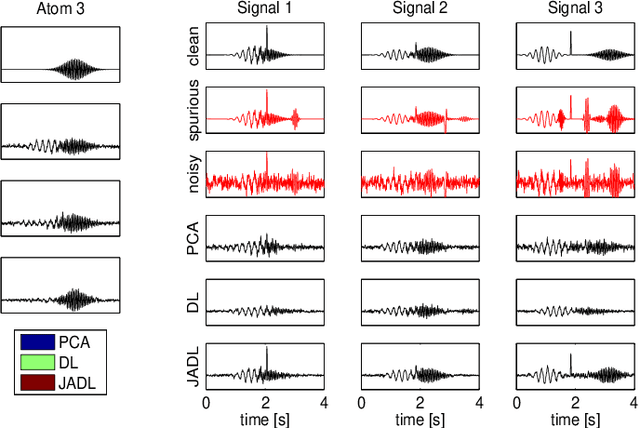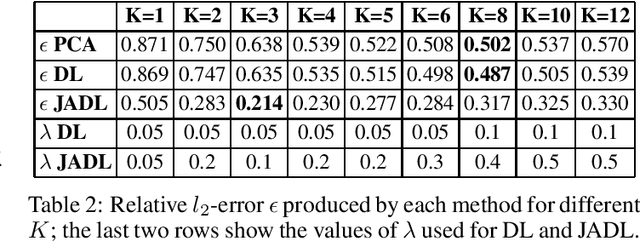Sandrine Saillet
Jitter-Adaptive Dictionary Learning - Application to Multi-Trial Neuroelectric Signals
Jun 24, 2013



Abstract:Dictionary Learning has proven to be a powerful tool for many image processing tasks, where atoms are typically defined on small image patches. As a drawback, the dictionary only encodes basic structures. In addition, this approach treats patches of different locations in one single set, which means a loss of information when features are well-aligned across signals. This is the case, for instance, in multi-trial magneto- or electroencephalography (M/EEG). Learning the dictionary on the entire signals could make use of the alignement and reveal higher-level features. In this case, however, small missalignements or phase variations of features would not be compensated for. In this paper, we propose an extension to the common dictionary learning framework to overcome these limitations by allowing atoms to adapt their position across signals. The method is validated on simulated and real neuroelectric data.
 Add to Chrome
Add to Chrome Add to Firefox
Add to Firefox Add to Edge
Add to Edge